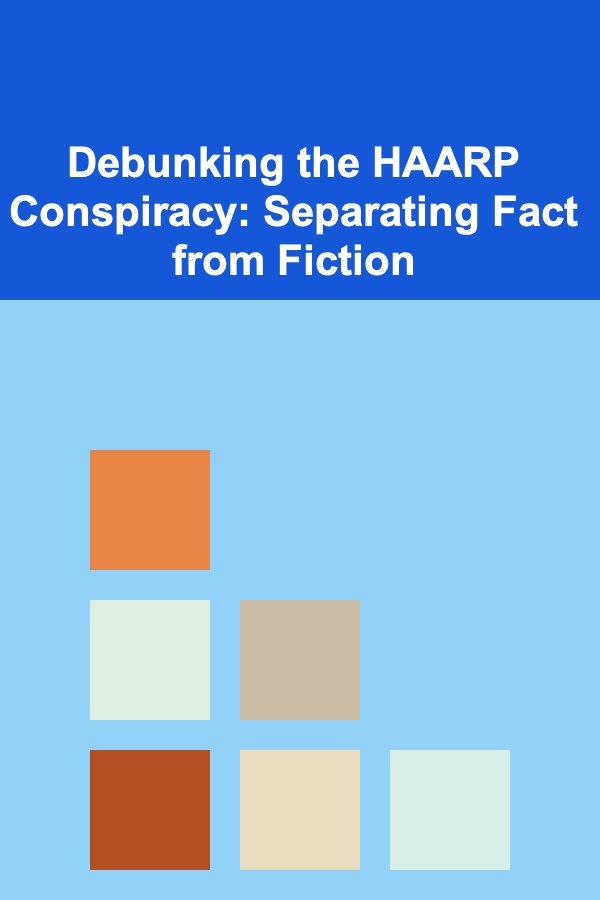
How to Use Templates for Efficient Note-taking
ebook include PDF & Audio bundle (Micro Guide)
$12.99$11.99
Limited Time Offer! Order within the next:

In an era where information overload is commonplace, efficient note-taking has become a vital skill for students, professionals, and lifelong learners. Whether attending lectures, participating in meetings, or researching new topics, the ability to capture and organize information effectively can significantly enhance understanding and retention. One powerful method to improve your note-taking efficiency is through the use of templates.
Templates provide a structured format for notes, making it easier to organize thoughts, compare ideas, and retain information. This article delves into the various types of note-taking templates, how to create your own, the digital tools available, best practices for implementation, and real-world case studies showcasing their effectiveness.
The Importance of Effective Note-taking
Effective note-taking plays a crucial role in learning and information retention. Here are several key reasons why mastering this skill is essential:
- Enhances Understanding: Taking notes forces you to process information actively, leading to better comprehension.
- Improves Retention: Written notes serve as a reference, aiding memory recall during reviews or exams.
- Organizes Information: Templates help categorize and prioritize information, making it easier to navigate complex subjects.
- Facilitates Review: Well-structured notes allow for efficient revision, saving time and effort when preparing for tests or projects.
- Encourages Engagement: Actively engaging with material through note-taking keeps you focused and involved.
Types of Note-taking Templates
There are several types of note-taking templates, each designed for specific contexts and preferences. Familiarizing yourself with these options can help you choose the most effective method for your needs.
3.1 Outline Templates
Outline templates utilize a hierarchical structure, breaking down topics into main ideas and subpoints. This method is beneficial for organizing lecture notes, research materials, or any content that lends itself to a clear progression of ideas.
Example Outline Template:
A. Subtopic 1
1. Detail
2. Detail
B. Subtopic 2
1. Detail
2. Detail
II. Next Main Topic
A. Subtopic 1
3.2 Cornell Method Templates
The Cornell Method involves dividing the page into three sections: cues, notes, and summary. This format encourages active engagement and aids in review by prompting users to generate questions based on their notes.
Example Cornell Template:
|--------------|-------------------------------------|
| Questions | Key details from lecture |
| | Important concepts and terms |
| | Additional thoughts and reflections |
| Summary | Brief recap of the session |
3.3 Mind Mapping Templates
Mind mapping is a visual note-taking technique that helps organize thoughts around a central idea. This method is particularly effective for brainstorming sessions or studying complex topics with multiple interrelated concepts.
Example Mind Map Template:
├── Subtopic 1
│ ├── Detail A
│ └── Detail B
├── Subtopic 2
│ ├── Detail A
│ └── Detail B
3.4 Charting Method Templates
The charting method is useful for comparing and contrasting information across different categories. It is ideal for subjects requiring analysis of relationships or differences, such as history or sociology.
Example Charting Template:
|----------------|-------------------|-------------------|-------------------|
| Topic 1 | Information A | Information B | Information C |
| Topic 2 | Information D | Information E | Information F |
3.5 Sentence Method Templates
The sentence method involves writing each new piece of information on a separate line, making it easy to capture details quickly during lectures or discussions. This method is suitable for fast-paced environments where detailed notes are necessary.
Example Sentence Template:
2. Important statistic mentioned.
3. Concept explained by the lecturer.
Creating Your Own Note-taking Templates
While pre-made templates can be helpful, creating your own tailored templates can further enhance your note-taking efficiency. Here's how to develop customized templates:
4.1 Identify Your Needs
Begin by assessing your specific requirements. Consider factors such as the subject matter, the type of information you need to capture, and your preferred learning style. Understanding these elements will guide you in designing effective templates.
4.2 Design the Layout
Once you have identified your needs, sketch a layout that includes all the necessary sections for your notes. Ensure the design accommodates sufficient space for writing while remaining organized. You can use software tools or simple paper formats to visualize your template.
4.3 Test and Revise
After creating your initial template, use it during a lecture or a meeting. Pay attention to how well it captures the necessary information and whether it suits your workflow. Be prepared to revise the template based on your experience and feedback.
Digital Tools for Note-taking Templates
In today's digital age, various applications and platforms offer note-taking templates that can streamline your process. Here are some popular tools:
5.1 Notion
Notion is a versatile productivity tool that allows users to create personalized note-taking templates. With its database features, you can organize notes seamlessly and integrate them with other projects.
5.2 Evernote
Evernote provides a robust platform for note-taking, complete with customizable templates. Users can create templates for various purposes, including meeting notes, project planning, and research.
5.3 Microsoft OneNote
Microsoft OneNote offers an intuitive interface for creating and managing templates. The software supports multimedia integration, enabling users to enhance their notes with images, audio, and more.
5.4 Google Docs and Google Keep
Google Docs allows you to create text-based templates easily, while Google Keep offers a simple way to take quick notes and reminders. Both tools support collaboration, making them ideal for group projects.
Best Practices for Using Templates
To maximize the effectiveness of your note-taking templates, consider implementing the following best practices:
6.1 Stay Consistent
Consistency is key in note-taking. Use the same template for similar subjects or types of notes to create a cohesive system. This approach makes it easier to find and review information later.
6.2 Customize for Different Subjects
While consistency is important, it's also crucial to tailor templates for different subjects. Different fields may require unique structures, so feel free to adapt templates to suit the specific demands of each subject area.
6.3 Regular Review and Update
Periodically review your templates to ensure they continue to meet your needs. Update them based on feedback from your experiences and changes in your learning environment.
Case Studies: Successful Note-taking with Templates
Exploring real-world examples can provide valuable insights into the effectiveness of note-taking templates. Here are a few case studies:
7.1 Academic Settings
Many students have reported improved grades and comprehension after implementing structured note-taking templates. For instance, a university student studying biology utilized the Cornell Method template to organize lecture notes effectively. By generating questions during the note-taking process, the student found it easier to engage with the material and perform well in exams.
7.2 Professional Workspaces
Professionals across various industries have adopted note-taking templates to enhance meeting productivity. In one study, a marketing team used the charting method to compare competitors during a strategy meeting. The structured format facilitated discussions, enabling team members to identify strengths and weaknesses quickly.
7.3 Personal Development
Individuals pursuing personal development goals have benefited from using templates for journaling and reflection. For example, a life coach implemented a mind mapping template to brainstorm clients' goals and action plans. This visual approach helped clarify thoughts and create actionable steps, leading to more successful coaching sessions.
Conclusion
Using templates for note-taking can significantly enhance your efficiency and effectiveness in capturing and organizing information. By understanding the various types of templates, creating your own, and leveraging digital tools, you can develop a personalized note-taking system that suits your unique needs.
Remember to implement best practices such as consistency, customization, and regular updates to maximize the benefits of your templates. Whether in academic settings, professional environments, or personal development, efficient note-taking through templates can pave the way for improved learning and productivity.
Embrace the power of templates in your note-taking journey, and watch as your ability to process and retain information flourishes. Efficient note-taking is not just about recording information; it's about transforming it into knowledge that you can access and apply when needed.
Reading More From Our Other Websites
- [Home Renovating 101] How to Create a Modern Look in Your Home Renovation
- [Personal Care Tips 101] How to Choose a Body Lotion for Oily Skin
- [Home Lighting 101] How to Use Lighting to Create a Relaxing Bathroom Ambience
- [Toy Making Tip 101] The Science of Play: What Making Your Own Toys Teaches About Engineering
- [Personal Financial Planning 101] How to Manage Your Personal Finances Like a Financial Planning Expert
- [Home Security 101] How to Secure Your Home Without a Security System
- [Home Soundproofing 101] How to Estimate the Cost of Home Soundproofing
- [Home Holiday Decoration 101] How to Create a Minimalist Holiday Decorations Setup That Still Feels Festive
- [Home Budget Decorating 101] How to Organize and Decorate Your Closet Like a Pro
- [Home Cleaning 101] How to Keep Your Home Smelling Fresh with Simple DIY Tricks

How to Create a Relaxing and Professional Environment for Clients
Read More
How to Understand Microgravity
Read More
How To Restore Old Furniture: A Comprehensive Guide
Read More
Managing Human Recreation in Wildlife Areas: A Delicate Balance
Read More
Debunking the HAARP Conspiracy: Separating Fact from Fiction
Read More
How to Plan a Destination Party Checklist
Read MoreOther Products

How to Create a Relaxing and Professional Environment for Clients
Read More
How to Understand Microgravity
Read More
How To Restore Old Furniture: A Comprehensive Guide
Read More
Managing Human Recreation in Wildlife Areas: A Delicate Balance
Read More
Debunking the HAARP Conspiracy: Separating Fact from Fiction
Read More